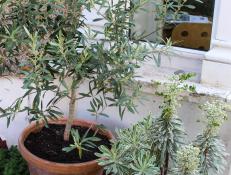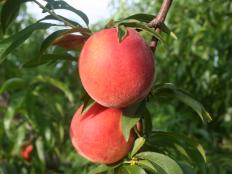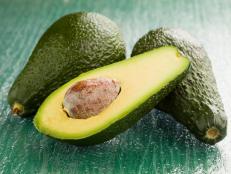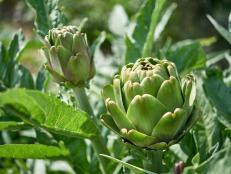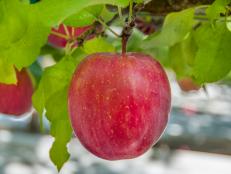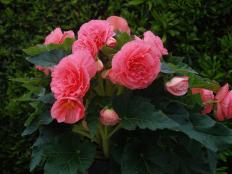Growing Pecan Trees
Find out if planting a pecan tree is the right choice for your yard.


The pecan tree (Carya illinoinensis) is a deciduous tree native to North America and most successfully grown in hardiness zones 5-9. This member of the hickory genus can grow to heights of over 100 feet and may live and bear nuts (actually drupes) for up to 300 years. Although the nuts of the tree have been appreciated as a delicacy since pre-colonial days, it wasn’t until the late 1800s that pecan trees were cultivated for commercial and ornamental use. Today, nearly 200,000 tons of the nut are harvested for commercial purposes and the tree has found a place in residential landscapes for its bounty, beauty and appeal as a shade tree.
Once established, pecan trees can be a spectacular addition to a yard large enough to bear their eventual size, but several factors are important to consider before adding this large and somewhat messy tree to a residential landscape. For growers with the space and patience to usher pecan trees into adulthood, the rewards are numerous.
Selecting a Tree
There are over 200 varieties of pecan tree, generally grouped by origin or appropriate climate. When considering what variety is right for you, factors include disease resistance, cold hardiness, size, nut shape and yield and the flowering habits and pollination requirements of the monoecious tree (male and female flowers bloom from a single tree).
Although pecan trees can be grown from seed, starting from grafted plants will reduce time to maturity and increases the likelihood of a disease-resistant tree with robust productivity. When buying pecan trees, look for trees between 4 and 6 feet tall and plan to put them in the ground within a day or two of arrival.
Where to Plant
Once it is determined if your climate will support a healthy pecan tree, the most common mistake when adding pecan trees to the home landscape is tree crowding. Pecan trees will eventually grow to become a prominent and potentially overwhelming feature in the yard. Trees planted too close together or near structures will eventually cause serious problems for competing trees and building foundations.
Plant pecan trees at least 30 feet apart and 20 feet or more from buildings or other structures. Select sites with full sun and deep soil with good drainage. Pecan trees require a lot of water, but standing pools will damage or even kill developing trees.
When to Plant
Pecan trees will establish more easily when planted while dormant. Late winter to early spring is the ideal time to add young pecan trees to a new plot.
Care
When planting pecan trees, dig a hole deep enough to cover the roots, but no deeper. Planted too deep, trees may be prone to settling and root damage, preventing growth. In some cases stakes and twine may be necessary to keep trees level and stable as they develop. Water new trees as soon as they have been planted. New trees require weekly watering of at least 10 gallons for the first 6-12 months until established and regular attention to water is essential for the first several years. Irrigation is recommended.
As the tree grows, prune large, low-hanging branches to allow the plant to continue healthy, consistent growth and examine lower leaves for brown, oblong lesions that may indicate the development of scab (a fungal disease common to the tree).
Once the tree has reached maturity and bears nuts, harvesting should take place as soon as the husks begin to open. Nuts may be gathered as they fall from the tree or shaken or gently dislodged from branches to reduce loss to foraging animals.
Nuts and husks aren’t the only thing the pecan tree will shed. Leaves, twigs and the aforementioned husks can quickly litter the ground around these large trees and an investment in pecan trees will also require an investment in a good rake. Sap and male flowers also leave a mess to clean throughout the year.
For homeowners looking to bring shade, beauty and a plentiful nut harvest to a spacious yard, pecan trees are a wonderful candidate, but not without some effort.






